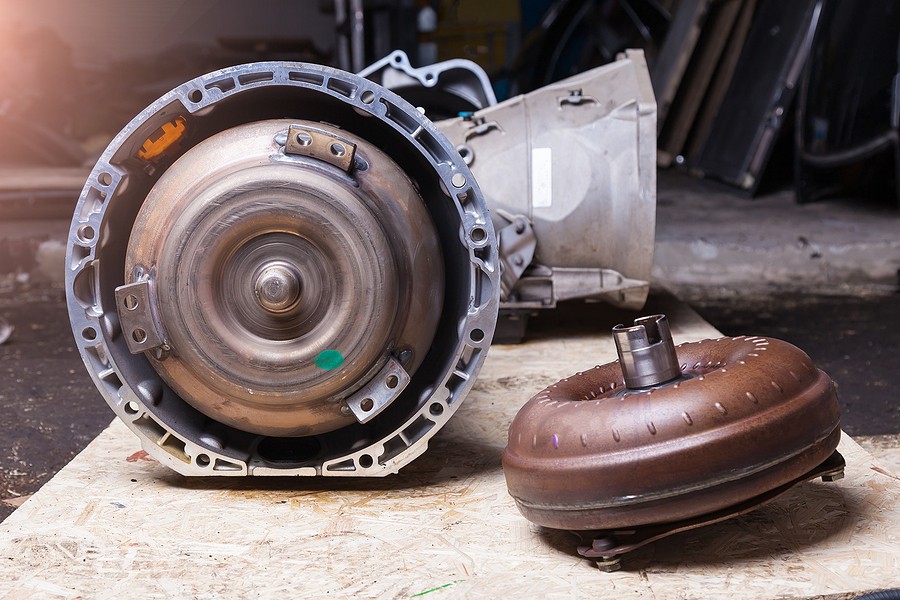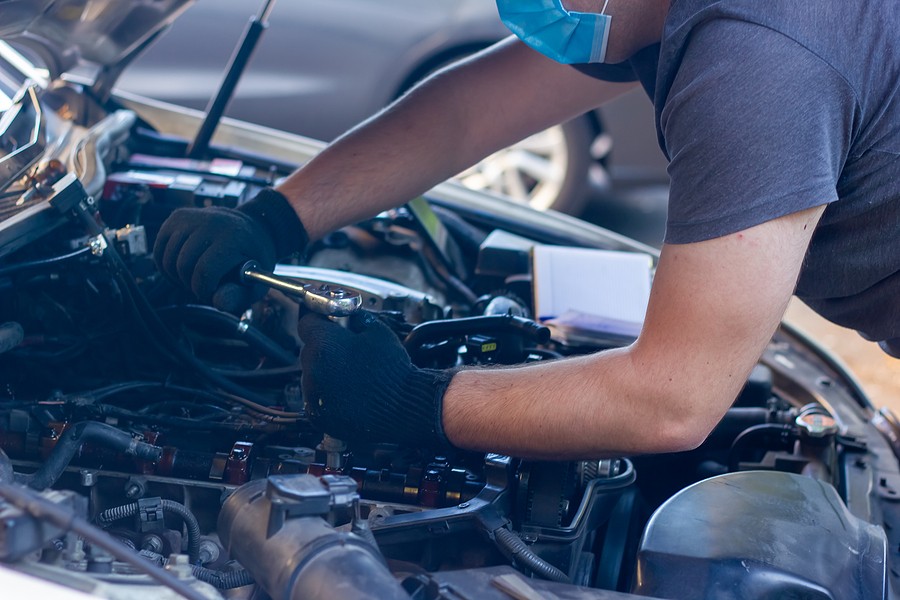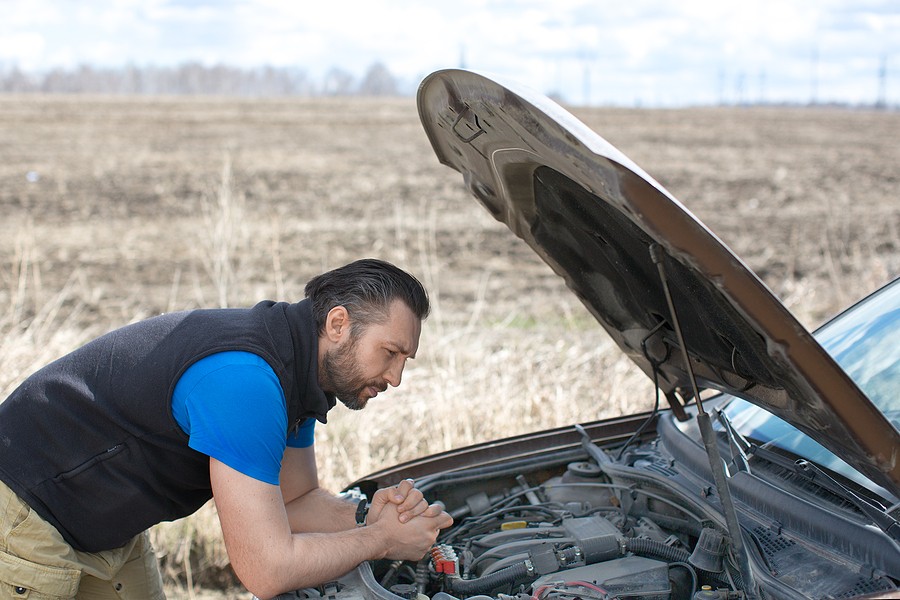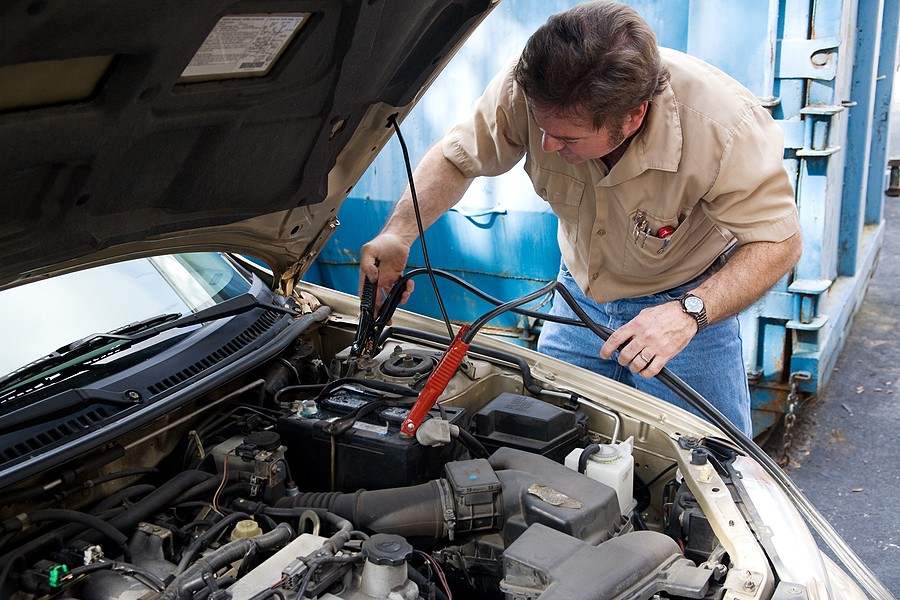The transmission pump is an essential component of your automatic transmission. It is responsible for transferring fluid from the transmission to the torque converter – in most cases; it is mounted on top of the transmission. A faulty transmission pump will affect clutch pressure, so it's important to catch the problem as soon as possible.
It is important to know what to do when your transmission pump fails if you are a driver. A transmission pump failure can cause many problems for your car, including overheating and damage to the engine.
This article will discuss the seven most common symptoms of a failing transmission pump.

What is a Transmission Pump?
A transmission pump is a hydraulic motor that supplies fluid to the torque converter. It's connected to the automatic transmission lines, where it pumps fluid to keep your car in motion. The pump is typically mounted on top of the transmission, and it may be driven by gears or via an extension shaft – depending on its design.
The function of the transmission pump is to provide sufficient fluid pressure for the automatic transmission. Therefore, it is vital to maintain a proper lubricant supply from the manual or automatic gearbox to a coupling device and back to the gearbox.
How Does a Transmission Pump Work?
A faulty transmission pump can affect how your car moves because it impacts clutch pressure. This means that the car will not match the RPM of what you are asking for when driving at a certain speed, or it will not be able to maintain your current RPM under acceleration or while climbing hills.
Transmission fluid is pumped from the transmission pump into the torque converter, which controls how much power is transferred to the wheels. The torque converter then sends the necessary power through the transmission fluid to the wheels of your vehicle, allowing you to continue driving.

What Happens When Your Transmission Pump Fails? 7 Symptoms!
A faulty transmission pump has many different symptoms that can affect how your car moves along. If you are experiencing any of the following problems, it is important to bring your car to a mechanic right away:
1. Pulsating Acceleration Detected
If your transmission pump fails, it can increase the number of pulses in the engine RPM while accelerating. The throttle action will be sluggish and slow because it's not obtaining enough power from the torque converter, so you won't accelerate as fast as you normally can.
2. Slip in Clutch Disc Detected
As the transmission pump fails, it may cause a slip in the clutch disc. This means that your car will not be able to accelerate or decelerate as evenly as it should, making driving more difficult. In addition, the RPM of your vehicle will waver when accelerating or decelerating, which can also cause problems with the engine.
3. Leaking Fluid Detected
When your automatic transmission fluid is leaking out of the car, there is a faulty seal around the gears and axles, causing the leak to happen. If you notice any leaks around these areas, you should have your car checked out right away. This could be a sign that your transmission pump has failed.
4. Higher than Usual Temperatures Detected
When the vehicle's RPMs increase while driving, this is usually because the engine isn't getting enough power from the torque converter. The added strain on the engine can cause it to generate more heat – which in turn causes all of the components of your car to work harder and increase their temperatures, including your transmission pump.
5. Slipping in Gear or No Movement at All Detected
Another symptom that may indicate that you have a faulty transmission pump is when you notice that your car is slipping gears or not going in any gear at all. If there is not enough fluid pressure available for the car to move, it will prevent the car from shifting gears and cause it to stay in one gear.

6. Screaming or Clunking Noise Detected
When your transmission pump fails, you will start hearing a loud screaming or clunking noise that is usually accompanied by jerking motions of your vehicle. This sound is caused by an imbalance in RPMs between the engine and wheels. It can also be accompanied by a burning smell typically associated with slipping clutch discs.
7. Whining Noise Detected
A whining noise coming from your engine may indicate that you have a faulty transmission pump and need to get your car checked out as soon as possible. The whining noise may occur while accelerating or traveling at more than 15 miles per hour.
How to Diagnose and Fix a Transmission Pump Failure?
If you are experiencing any of the symptoms outlined above, it is time to have your car checked out by a mechanic. The problem could be as simple as your transmission fluid is low, but if there are signs that it has failed, then you need to bring your vehicle into a shop soon.
A common mistake that people make is to ignore the warning signs that their transmission pump is failing. Unfortunately, this can be a very expensive mistake because if your transmission pump has failed, it will need to be replaced as soon as possible.
Here is a step by step process on how to diagnose a faulty transmission pump:
#1: choose your working area
Before you get out of the car, open up your bonnet and map your fluid reservoir. You do not want to be searching for it when you have a car that could potentially overheat at any second. It's best to find it beforehand so that you can keep your eyes on the fluids as opposed to checking out where everything is.
#2: locate your transmission fluid reservoir
the fluid reservoir can be found at the back of the engine. The reservoir is a plastic container with a lid on it and tells you exactly how much fluid should be there. If it's low or empty, you know that you have a problem.
#3: Check your dipstick
results from the dipstick will tell you how much fluid is in your car instead of just checking out where everything should be like we did previously with locating the fluid reservoir and checking out the location of other parts. This way, if one thing looks wrong, it could indicate that something else might also need attention down the line. It's best to know what results mean without second-guessing anything, and this guide is here to help.
#4: What are your results telling you?
Results from your dipstick will be read on a scale of 1-5, where five means that the fluid levels are good and ready for driving, down to 1, which means that you do not have enough fluid in it. A result of 3 would indicate that the fluid levels are ok, but they should be more or less rather than just right on. Some fluids leak out during use, whereas others evaporate naturally over time, so it's best always to monitor them closely.

Can I drive with a faulty transmission pump?
If you have a car making a loud screaming noise, it is best to pull over and check out your fluid levels right away. Driving will only make the sound worse and could cause other problems down the line.
It's always better to err on the side of caution when it comes to something like this because trying to drive with a faulty transmission pump can be extremely dangerous for yourself and others who are driving nearby.
What happens if I ignore my symptoms?
The issue here is not going to go away by itself, so if you don't change anything, you'll end up at a mechanic soon enough, wondering what else needs replacing before they fix the problem. Additionally, things will worsen as time goes on, meaning that there will be more issues that you will have to sort out.
How much does it cost to diagnose a faulty transmission pump?
Diagnosing what is wrong with your car can be done easily by locating the parts beforehand and checking them out yourself before taking them in for professional help. You can even go ahead and change any parts without needing to take them to the mechanic unless there are signs that you need help.
Prices will vary depending on where you live, but most people spend between $100-USD 150 at their local shop. This price includes recovering fluid that has leaked out of your car and putting new fluid back in so that your car is good to drive again.
If your mechanic decides to replace the transmission pump, expect repair costs to range from $600 to over a thousand dollars. This is because mechanics will have to remove multiple parts to access this part, and replacing the transmission pump itself can be challenging instead of an oil change for your car or getting new brakes put on.
Remember that transmission pump replacement cost differs depending on your vehicle's make, model, and year. For instance, a 2004 Honda Civic will cost around $599, whereas a 2001 Toyota Sienna would be around $923.

Preventing Future Problems with the Transmission Pump
The best way to prevent future problems is to change your transmission fluid when recommended. This can be found in the owner's manual for your car, or you can ask a mechanic what they recommend.
However, here are some tips from automotive experts on how to prevent premature transmission pump damages:
#1: regular maintenance
Following the regular service schedule set by the manufacturer for your vehicle will ensure that you stay on top of any potential problems that might come up down the line.
For instance, if you own a car that needs its transmission fluid changed every 40-50k miles, it's best to do this every time and not wait until 80k miles. This is because the mechanics who change the fluid are doing a visual inspection of your transmission pump to see if it's showing any signs of potential damage.
#2: Don't ignore problems
It is better to be safe than sorry, so if you think something might not be right, go ahead and have it checked out by someone qualified. Ignoring problems will only cause bigger issues later on, which will cost more money in repair costs.
#3: skip scheduled service visits
By letting your vehicle sit at the mechanic for a scheduled service visit, you're taking up their time that could have been used on another customer with an actual problem that needs verifying.
In some cases, manufacturers will give a warranty that covers certain expenses if they come out of scheduled service visits. So it might be a good idea to check your car's warranty and see if any scheduled service visits are covered before going ahead with this option.
#4: check tire pressure
This is an easy thing to check every once in a while before you get into your vehicle. You don't want to risk losing control of the steering wheel or braking on the road because one of your tires might have low tire pressure, which can cause additional stress on your transmission pump and ultimately result in it failing.

Is it ok to drive with a bad transmission pump?
Short Answer: No
If your transmission pump is faulty, it's best not to drive your car.
There are some instances where you can continue driving the car but only for short. This will depend on how bad the problem is and what symptoms present themselves.
Cars with a slipping transmission could further prevent this from happening if you drive around with the condition. However, it's not recommended as you want to get this fixed as soon as possible.
In some cases, you might be able to limp your car to the nearest mechanic using only first gear before completely shutting off the engine. This will allow you to get somewhere safer and have it towed or repaired sooner.
It's best to avoid driving the car as much as possible if your transmission pump is broken because there could be further problems done to other parts of the car, such as the driveshaft, radiator, exhaust system, and so on. These can all result in costing a lot more money in repairs.
If you're worried about how much it could cost to fix the problem, then contact a mechanic and let them know your symptoms. They can offer you a quote on what it would take to bring your car back to good working condition, as well as answer any additional questions you may have.

Conclusion
The transmission pump is what moves fluid through the car's powertrain. If it fails, you'll notice various symptoms that can range from slipping to grinding gears. We hope this article has provided helpful information on how to identify signs of a failing transmission pump and get your vehicle back up and running as soon as possible!



